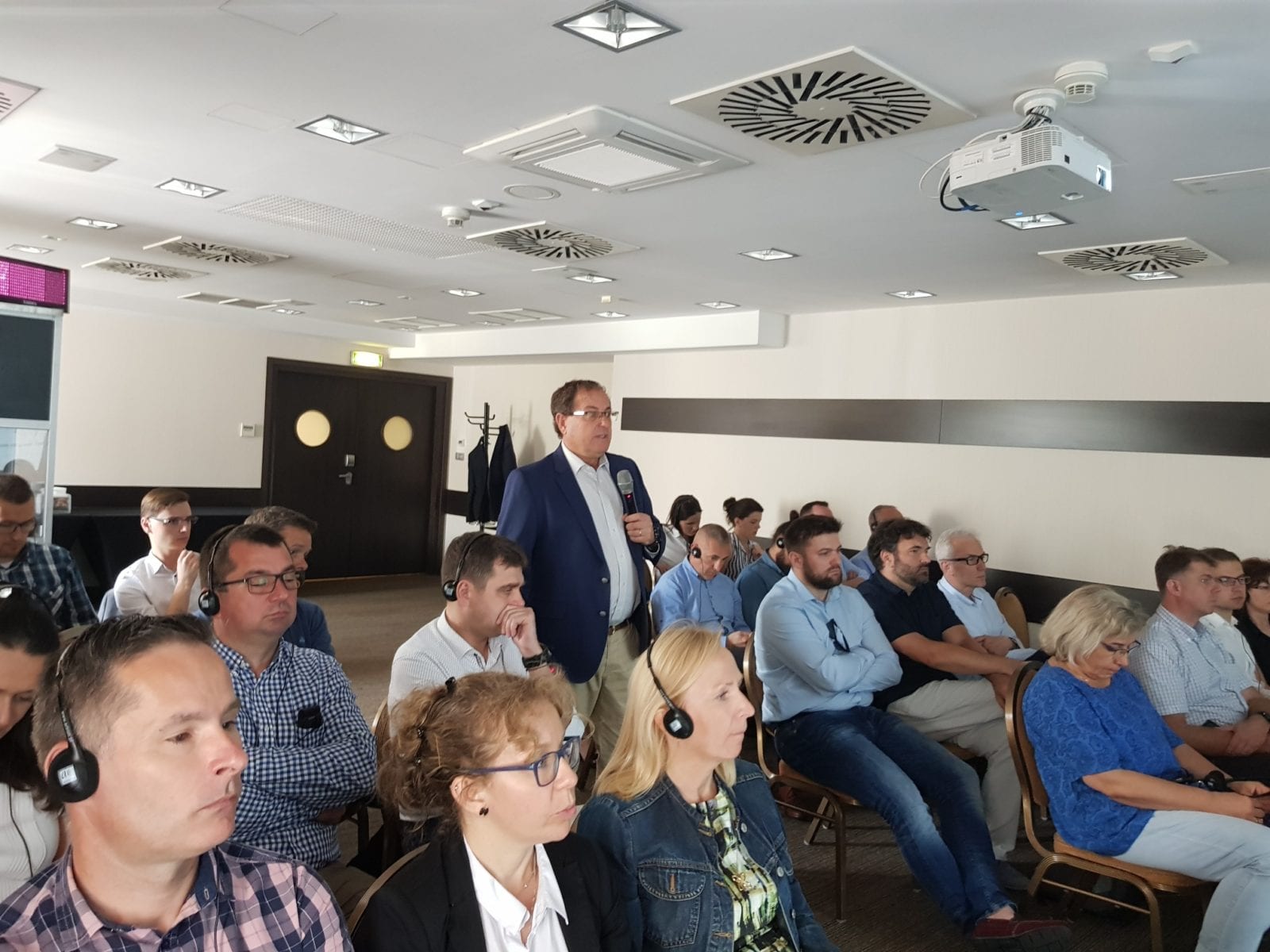Polish Poultry Specialists Attend U.S. Soy Nutrition and Feed Manufacturing Technology Seminar
- Category:
- Animal Utilization
- General News

USSEC has contributed to the massive success of Polish poultry production for more than two decades. In 2019, Poland’s production of poultry meat is forecast to increase by 8.5 percent, up to about 3.2 million metric tons (MMT). In the first quarter of this year, the production was about 7 percent greater than a year earlier. According to the Institute of Agricultural and Food Economics (IAFE), foreign sales are likely to grow to more than 1.4 MMT this year, around 10 percent, and will represent almost 44 percent of production. In 2018, the production of poultry meat amounted to approx. 2.9 MMT, 4.3 percent greater than the previous year.
This year, USSEC organized and funded a two-day seminar titled, “Poultry Nutrition & Feed Manufacturing Technology: Practices in America and Europe,” aimed at providing Polish poultry specialists with cutting edge knowledge. The conference was held in June 2019 in the medieval city of Gdańsk, the birthplace of the Solidarity freedom movement in the 1980s, which gradually lead to the collapse of communism in Eastern European countries.
Two top experts from the University of Arkansas led the nutrition segment: Dr. Michael Kidd, Director, Tyson Center of Excellence for Poultry Science, and Department Head & Professor, Poultry Science Department; and Dr. Samuel Rochell, Faculty Poultry Science, Assistant Professor.
Dr. Rochell laid the foundation by explaining nutrition and gastrointestinal health in broilers, ingredient evaluation concentrating on utilization of amino acids and energy, and dietary energy responses of modern broilers.
Dr. Kidd presented an overview of amino acids use in the U.S. and reported the newest studies on nutritional utilization of L-valine. He also lectured on broiler breeder nutrition and its effects on progeny quality, a special request of the Polish audience.
Comparison of U.S. soybean meal to soybean meals of other origins and to other protein sources was presented by Dr. Jan van Eys, GANS, France.
The feed technology segment of the seminar was given by Juan Acedo-Rico, Acedo & Associates, Madrid, Spain. He began by giving explanations of post-pelleting application strategies for vegetable oils and liquid additives at a final processing step, a natural connection to the previous presentations. Dr. Acedo-Rico next listed a number of important improvements in a feed mill for efficient feed production.
Taking into account a massive number of old feed mill modernization and new facilities building projects currently happening in Poland, Dr. Acedo-Rico spoke about design and planning for a challenging new poultry feed start-up, which was inspiring to a number of participants. For others, it was a well-organized review of how they do things in their companies.
As summarized by the main coordinator of the event, USSEC Technical Director North-East Europe Jerzy W. Kosieradzki, despite a multitude of conventions, seminars, and company events competing in June for the same audience, the USSEC poultry nutrition and feed technology seminar was well attended and everybody appreciated the top professional knowledge received and relationships built. USSEC sees this event as another good investment into the growth and prosperity of Poland’s poultry market for soy, particularly when viewed in tandem with the 128,000 MT of U.S. Soy Hi-Pro meal the country has already purchased this season.











